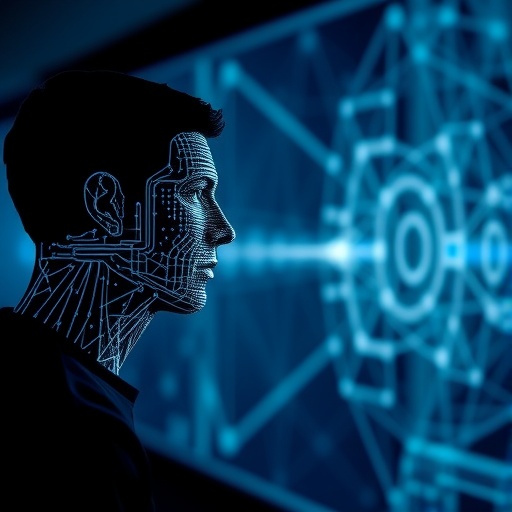In a groundbreaking exploration of artificial intelligence, researchers Ma, Han, and Li have introduced a state-of-the-art machine learning-based algorithm designed to classify and recognize user behavior by leveraging multimodal data. This research, published in the upcoming 2025 issue of Discover Artificial Intelligence, showcases the transformational potential of machine learning within various domains, including user experience design, online learning environments, and personalized service delivery. The team’s profound insights into user activity patterns could redefine how machines interpret and respond to human actions in complex settings.
The rise of machine learning has coincided with advancements in data collection technologies, enabling researchers to gather vast amounts of multimodal data. This term refers to integrating information from multiple sources or modalities, such as text, audio, video, and sensory data. By employing this diverse array of information, the authors aim to enhance the accuracy and robustness of user behavior classification systems. This kind of comprehensive data analysis allows for a more nuanced understanding of user interactions, which is especially critical in today’s data-driven landscape.
One of the most significant challenges in user behavior recognition lies in the variability and complexity of user interactions. Traditional algorithms often struggle to cope with the dynamic nature of human behavior, which can vary widely depending on context, emotion, and environment. By developing a model that can adapt to various data types and recognize patterns across different modalities, the research team addresses these challenges head-on. Their approach paves the way for more intelligent systems that can seamlessly adjust to individual user preferences and tendencies.
The authors implemented a sophisticated deep learning architecture to facilitate user behavior classification. Their model consists of multiple layered networks that can process and extract features from diverse input data. Through extensive training on large datasets, the algorithm learns to identify distinct patterns indicative of specific user actions. This information can then be utilized by various applications, from enhancing recommendations on streaming platforms to optimizing user interfaces in mobile applications.
In addition to the technical advancements presented, a noteworthy aspect of this research is its focus on privacy and ethical considerations. As data collection expands, so too do the concerns surrounding user privacy. The authors emphasize the importance of ensuring that their algorithm operates under ethical guidelines, promoting transparency and user consent. Technologies that responsibly handle sensitive information will be essential in gaining public trust and facilitating wider acceptance of machine learning applications in everyday life.
The implications of this research extend far beyond academia. Businesses across various sectors are increasingly recognizing the value of personalized customer experiences, and Ma, Han, and Li’s algorithm could serve as a vital tool in this endeavor. By understanding user behaviors at a granular level, organizations will be better equipped to tailor their products and services to individual customer needs, resulting in enhanced satisfaction and loyalty.
Moreover, the publication underscores the potential of machine learning in educational contexts. In an era where remote learning has become critically important, understanding user behavior can significantly impact educational outcomes. By recognizing the distinct patterns of how students interact with digital learning resources, educators can adjust their strategies to better engage learners and provide them with personalized support tailored to their unique paths.
As the research community continues to delve into the realms of machine learning and user behavior, the collaboration between disciplines such as computer science, psychology, and design becomes increasingly vital. The insights offered by integrating these fields can lead to more holistic solutions that cater to both technological capabilities and human experiences. This interdisciplinary approach also lays the groundwork for future innovations in artificial intelligence, suggesting avenues for further research and development.
Looking ahead, the potential applications of this algorithm are virtually limitless. Beyond personalized recommendations and educational enhancements, the technology can be utilized in fields such as healthcare, where understanding patient behavior can lead to better treatment plans and improved health outcomes. Similarly, industries focused on user engagement through marketing strategies can leverage these insights to create more compelling and effective campaigns that resonate with their target audiences.
The research represents just one piece of the puzzle in the expansive landscape of machine learning and user behavior analysis, yet it illuminates critical pathways for future exploration. The authors hope their findings will inspire further research that explores multimodal data analysis, ensuring that organizations not only develop smarter algorithms but also foster environments where ethical considerations are at the forefront of technological advancement.
As they continue their work, Ma, Han, and Li are keenly aware of the need to scrutinize where these technologies intersect with social implications. The balance between innovation and responsibility lies at the heart of their mission, as they seek to influence the trajectory of artificial intelligence in ways that serve and enhance the human condition.
In conclusion, the study of machine learning for user behavior classification marks a significant advancement in the ongoing quest for enhanced artificial intelligence. As technology continues to evolve, the ramifications of such research will undoubtedly reverberate across multiple fields, sparking conversations about the responsible deployment of such powerful tools. The future of machine learning is bright, illuminated by the insights and innovations crafted at the intersection of data, technology, and humanity.
Subject of Research: Multimodal Data in User Behavior Classification and Recognition.
Article Title: Machine learning based learning user behavior classification and recognition algorithm under multimodal data.
Article References:
Ma, L., Han, W. & Li, J. Machine learning based learning user behavior classification and recognition algorithm under multimodal data.
Discov Artif Intell (2025). https://doi.org/10.1007/s44163-025-00644-8
Image Credits: AI Generated
DOI:
Keywords: Machine Learning, User Behavior, Multimodal Data, Classification Algorithm, Artificial Intelligence, Personalization, User Experience.
Tags: accuracy in user behavior classificationartificial intelligence in user experiencechallenges in user interaction analysisclassification systems for user activitiesdata integration from multiple sourcesinnovations in machine learning researchmachine learning advancements in data collectionmultimodal machine learningonline learning environmentspersonalized service delivery systemsunderstanding human actions in complex settingsuser behavior recognition algorithms





